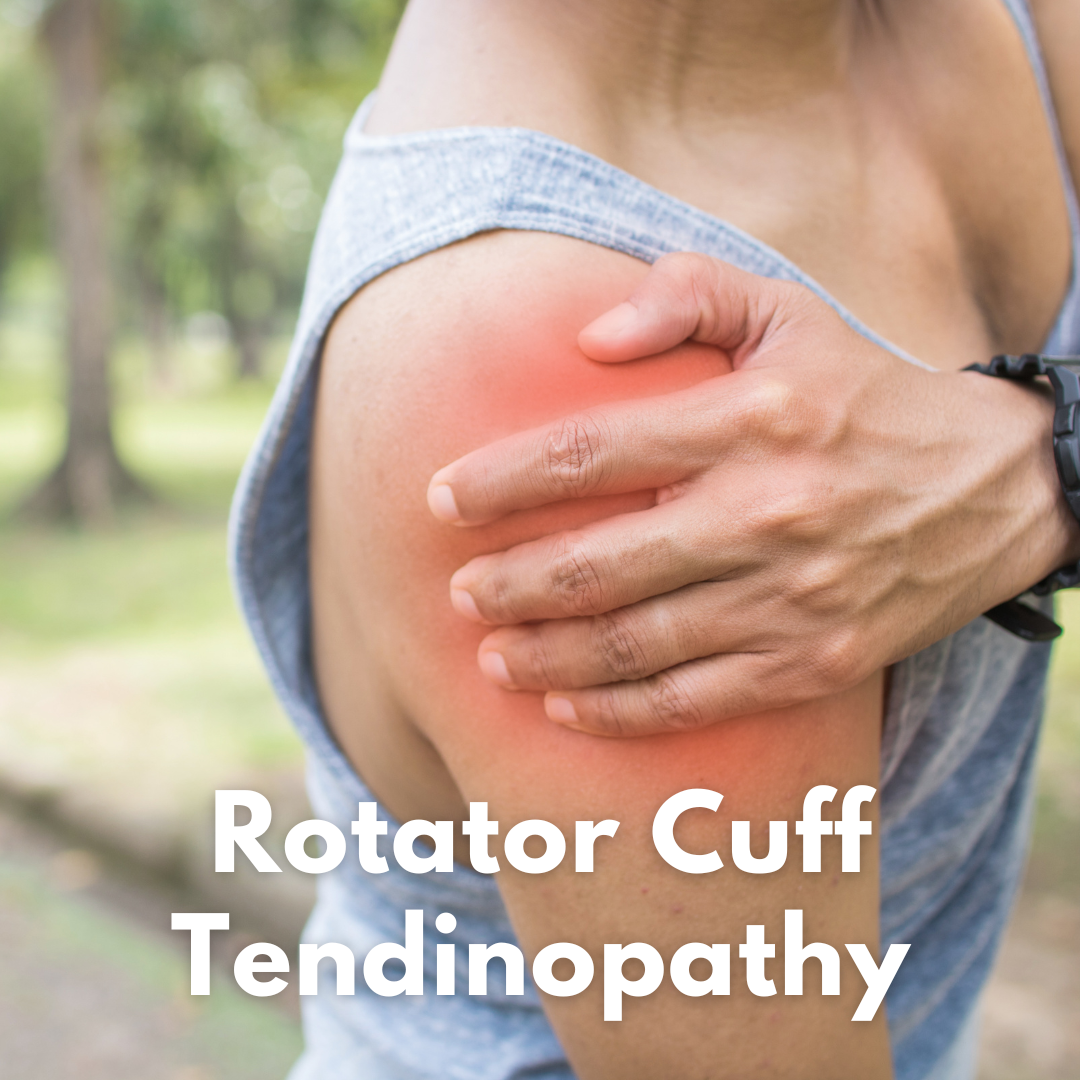By Caitlan Skillicorn, Senior Physiotherapist Healthfix North Sydney
Rotator cuff tendinopathy is a common condition that affects many individuals, particularly those who engage in repetitive overhead activities or have previously suffered from a shoulder injury. Understanding how to effectively rehabilitation rotator cuff tendinopathy is crucial for regaining strength, mobility, and overall shoulder function. This blog serves to educate you on how you can best rehabilitate your shoulder with the help of our physiotherapists and exercise physiologists
What is your Rotator Cuff?
Your rotator cuff (RC) is a group of 4 muscles that surround your shoulder joint. These muscles include the supraspinatus, infraspinatus, subscapularis, and teres minor (see photo). They work together to keep the top of your arm bone firmly within the shallow socket of the shoulder (imagine beach ball on a dinner plate), providing stability as well as facilitating a wide range of movements in your shoulder.
What are the main causes of Rotator cuff tendinopathy?
RC tendinopathy occurs when the tendons of the RC muscles become inflamed or damaged. Several factors can contribute to the development of this condition, including:
- Overuse: Repetitive overhead movements such as throwing, lifting or reaching can put excessive strain on the RC tendons, leading to inflammation and injury. Think of a time where you spent the whole day painting or gardening or got back into the gym and went too hard too soon.
- Ageing: As we age, then tendons in our body become less flexible and are more prone to wear and tear. This is a natural degeneration process and becomes more common as we get older.
- Poor Posture: Slouching or hunching forward can alter the mechanics of your shoulder joint, putting added stress on the RC tendons increasing the likelihood of injury
- Trauma: A sudden impact to the shoulder joint such as a fall or direct blow, can cause damage to the RC tendons, increasing inflammation to the area increasing the chance of irritation.
What is the role of physiotherapy in RC tendinopathy rehabilitation?
Physiotherapy plays a crucial role in the rehabilitation of RC tendinopathy. Your physiotherapist will create a customised plan tailored to your specific needs, focusing on:
- Manual therapy
- Hands-on techniques such as massage and joint manipulation are used in the early stages to help alleviate pain, reduce inflammation, and improve tissue mobility. It is helpful to allow better movement within the shoulder for exercise but is a temporary solution that needs to be backed up with exercise.
- Exercise Prescription
- Targeted exercises are prescribed to strengthen the RC muscles, improve shoulder stability and restore range of motion. These exercises vary from based stretching to resistance training and functional movements, address imbalances and promoting proper shoulder mechanics
- Education and ergonomics
- Your physiotherapist should educate you on proper shoulder mechanics, posture and ergonomic principles to prevent any further injury and promote optimal healing. This may involve suggestions in changing workplace sets ups as well as guidance on safe lifting techniques.
How long does it take to recover from an RC tendinopathy?
The recovery timeline for RC injuries can vary depending on the severity of the condition as well as the individuals overall health and adherence to the rehabilitation program. Generally speaking mild cases may settle within a few weeks only requiring a few months of strengthening, however more chronic or severe cases may take several months of dedicated rehabilitation to achieve a successful outcome. It is essential you follow the recommendation of your physiotherapist to optimise your recovery outcomes.
What are the stages of Rehabilitation?
- Pain Management
- The initial focus is on reducing your pain and inflammation through relative rest, manual therapy and pain medication as required. You will spend a good amount of time with your physio one on one here to ensure your symptoms settle before moving into too much exercise.
- Restoration of Range of Motion
- As pain subsides your movement through the shoulder should gradually improve, stretches and mobility exercises form the next part of your rehabilitation alongside your physiotherapist
- Strength Building
- Gradually as you become more mobile, strength becomes the next important thing to improve, here is where joining into our physio led restore classes will allow a more efficient rehabilitation, having access to this daily or as many times as recommended by your physio, your shoulder will be feeling back to normal very soon.
- Functional Training
- This part of the rehab is for those who are looking to return to some form of activity that requires more than then just general strength, in this phase your physiotherapist or exercise physiologist will individualise your exercises to prepare your shoulder for the sport specific or lifestyle movements that it will be required to complete
- Prevention and maintenance
- Once you are back to what you enjoy doing, the focus shifts to prevention through on-going exercises and lifestyle modifications. Our Exercise physiologist led Base classes are a great starting point to continue good quality movements in a safe environment to maintain all the hard work you’ve put into your shoulder rehabilitation.
Conclusion
Rehabilitation of RC tendinopathies require a comprehensive approach that addresses pain relief, restoration of mobility, strength building and functional improvement. Through physiotherapy interventions tailored to your individual needs, you can overcome the challenges and return to your desired level of activity and function.
If you are experiencing shoulder pain or suspect a RC tendinopathy, don’t hesitate to reach out to Healthfix for a thorough assessment and personalised treatment plan.

